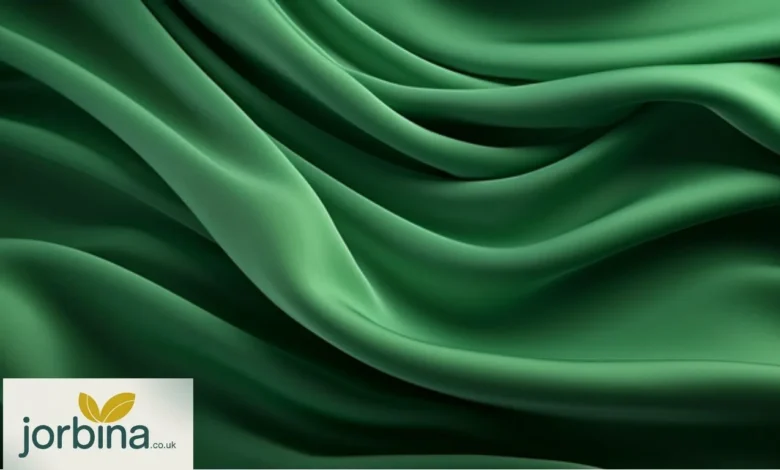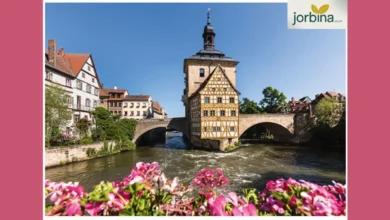Greener Fabrics and the New Era of Conscious Clothing

Fashion’s Turning Point
What if the shirt you’re wearing could help the Earth instead of harming it? Think about it, our clothes touch every part of our lives, yet most people rarely stop to ask what they’re made of. The truth is, fashion is evolving fast. Shoppers are questioning where fabrics come from, how they’re made, and what kind of legacy they leave behind. That shift has opened the door to something better: greener fabrics, the foundation of a more conscious and responsible clothing era. These materials aren’t just a fad; they’re the core of a movement that’s redefining how we think about style, comfort, and sustainability.
Understanding Greener Fabrics
What, then, makes a fabric “greener”? Simply put, greener fabrics are made of materials that are intended to lessen environmental damage at every stage, from the procurement of raw materials to disposal. They depend on recyclable or renewable resources, use less water, and employ fewer chemicals. Some are manufactured from post-consumer waste, such as plastic bottles, while others are made from organic crops. Their shared purpose is to endure, feel at ease, and gently return to the earth when their time is up. These developments are redefining textiles as long-term decisions that complement a sustainable way of life rather than as fads.
Why Fashion Needed to Change
For years, the fashion industry has been one of the largest contributors to pollution. Fast fashion encouraged cheap production, overconsumption, and endless waste. Rivers turned toxic from dyes, synthetic fibres filled oceans with microplastics, and garment workers paid the price for cheap clothing. But that narrative is finally being rewritten. People want to know the story behind what they wear. This awareness has pushed brands to innovate, experiment, and embrace responsibility. The rise of greener fabrics signals a much-needed turning point, a move from excess to ethics.
Innovative Fabrics Leading the Change
Here’s where it gets fascinating. Innovation is driving this shift faster than anyone expected. Fabrics made from oranges, mushrooms, algae, and even agricultural waste are now part of the mainstream conversation. Imagine leather alternatives crafted from pineapple leaves or fabric spun from recycled fishing nets. These materials are strong, comfortable, and biodegradable. Designers once limited by tradition are now exploring endless creative possibilities. The message is clear: you can be stylish without compromising your values.
The Evolution of Eco-Friendly Fabrics
Impact and quality are balanced in eco-friendly textiles. Toxic pesticides are removed by organic cotton. Bamboo requires very little water and grows quickly. Tencel provides a soft and breathable texture because it is made from wood pulp that is harvested sustainably. All of these textiles contribute to reducing the environmental impact of the sector. We’re witnessing careful production that prioritises longevity in place of the outdated fast fashion model. The industry moves closer to accountability the more we embrace these fabrics.
Sustainable Fabric Brands Setting New Standards
Many forward-thinking brands are taking sustainability seriously, treating it not as a marketing ploy but as a principle. Labels like Patagonia, Tentree, and Stella McCartney have set the tone, but smaller independent brands are making equally powerful contributions. They experiment with limited runs, repurposed textiles, and locally sourced materials. One company that’s caught attention for pushing creativity and connection in sustainable design is Brandi Loge: A Beacon of Change, Creativity, and Connection. This movement isn’t just about producing greener clothes; it’s about reimagining fashion as a responsible and artistic ecosystem.
The Best Natural Fabrics to Know
We simply forgot to value the best materials that nature has always provided. Strong, breathable, and biodegradable, linen is derived from flax. Hemp enriches the soil while growing quickly and without the use of chemicals. Compared to conventional cotton, organic cotton uses a lot less water and feels softer on the skin. When ethically sourced, wool and silk offer luxury and natural insulation without the use of artificial additives. These textiles are honest and return to nature in the same manner that they were taken from it, which is what makes them so beautiful.
The Most Sustainable Fabrics in Today’s Market
A select few materials stand out as sustainability leaders among the vast array of materials available. When it comes to durability and resource efficiency, hemp is a top choice. Because of its smooth texture and renewable wood source, Tencel is still a popular choice. Because recycled cotton turns used fibres into new products, it helps reduce textile waste. Piñatex, the novel leather made from pineapple leaves, gives agricultural waste a new lease on life. Every one of these textiles shows that sustainability can be clever, practical, and beautiful.
Sustainable Textile Products That Matter
The fabric is only one aspect of the sustainability discussion. Transportation, packing, and dyes all have an impact. Natural dyes derived from fruits, vegetables, and spices are taking the place of artificial ones. Packaging that can be recycled or composted is becoming standard for environmentally conscious companies. To reduce water waste during production, some even use digital printing. This all-encompassing strategy is altering the fundamentals of the sector. Every choice has an impact on the health of the planet, from fibre to finish.
The Power of Eco-Friendly Sustainable Fashion
Eco-friendly fashion isn’t just a trend; it’s a mindset shift. It’s the idea that every purchase is a choice that shapes the world. More people are embracing capsule wardrobes, buying fewer, higher-quality items that last. Rental services and resale platforms are giving clothing a second life, cutting waste dramatically. This conscious approach doesn’t mean compromising style. On the contrary, it encourages individuality. The future of fashion belongs to those who care deeply about both creativity and responsibility.
Fabric Trends to Watch in 2025
Fashion’s future looks exciting and responsible. In 2025, we’ll see more fabrics that close the loop, materials designed to be recycled endlessly without losing quality. Biodegradable synthetics will replace plastics, and regenerative farming will help rebuild soil health. Expect fabrics that adapt to temperature, manage moisture, and even track health indicators. The line between technology and textile will blur, creating garments that are smart, functional, and eco-conscious. These aren’t distant dreams; they’re already being developed in design studios around the world, including those featured on Jorbina, a platform highlighting innovation and sustainable creativity.
How to Choose Greener Fabrics

If you want to make more sustainable wardrobe choices, start small. Read labels carefully, look for certifications like GOTS (Global Organic Textile Standard) or OEKO-TEX. Choose natural or recycled fabrics such as organic cotton, hemp, or Tencel. Support transparent brands that share how and where they make their clothes. Wash your garments in cold water to save energy and prevent fibre shedding. And when possible, repair or upcycle old clothes instead of tossing them. A greener wardrobe isn’t built overnight; it’s shaped by thoughtful habits.
The Economics of Sustainable Fabrics
At first glance, sustainable fabrics might seem pricier, but they’re an investment that pays off. Higher quality means longer wear, fewer replacements, and less waste. Consumers are increasingly willing to pay for transparency and ethics. Businesses that align with these values build stronger customer trust and brand loyalty. On a global scale, investors are also supporting eco-focused innovations, recognising their long-term profitability. The rise of greener fabrics proves that doing good and doing well can coexist.
The Roadblocks Ahead
No movement is without challenges. Sustainable fabric production often involves higher costs and limited scalability. Some materials, like organic cotton, still require large amounts of land and labour. Certification standards can be inconsistent, creating confusion about what’s truly sustainable. But despite these obstacles, progress continues. New technologies are making processes more efficient, and consumer demand keeps driving change. Every step forward matters, no matter how small.
Why It Matters Now More Than Ever
Climate change is not a far-off problem anymore; it is influencing our lifestyle and fashion choices. Selecting eco-friendly textiles might not seem like much, but when done collectively, it can have a significant impact. Every environmentally friendly purchase promotes fair labour, conserves resources, and lowers pollution. Since almost everyone is impacted by fashion, it’s one of the easiest arenas to effect significant change. Not only are you dressing yourself when you purchase clothing made of sustainable materials, but you are also influencing the planet’s future.
The Bottom Line
Greener textiles are a cultural movement rather than just a fashion fad. They stand for the meeting point of innovation, responsibility, and creativity. Purpose, quality, and awareness are more important in the future of fashion than continual novelty. This movement is shaped by every decision we make, from where we shop to what we wear. Consider this the next time you go shopping: Does this item benefit or hurt the environment? The core of conscious clothing is that straightforward query, which also serves as a defining characteristic of the upcoming fashion generation.
FAQs
What are 100% natural fabrics?
These are fabrics made completely from natural sources without synthetic fibres. Common examples include cotton, linen, silk, wool, and hemp.
What are three sustainable fabrics?
Three top sustainable fabrics are hemp, organic cotton, and Tencel. They require fewer resources and naturally decompose without polluting the environment.
What are the three main types of fabrics?
The three main categories are natural fabrics (like linen and silk), synthetic fabrics (such as polyester), and blends (a mix of both natural and synthetic fibres).
What are eco fabrics?
Eco fabrics are materials designed to reduce environmental harm. They often come from renewable sources and use processes that minimise water, energy, and chemical use.
What is the most eco-friendly natural fabric?
Hemp is widely considered the most eco-friendly natural fabric. It grows fast, restores soil nutrients, and requires very little water or pesticides.



